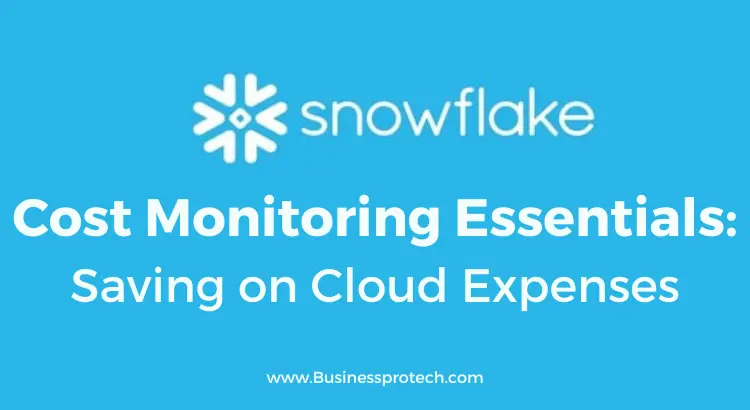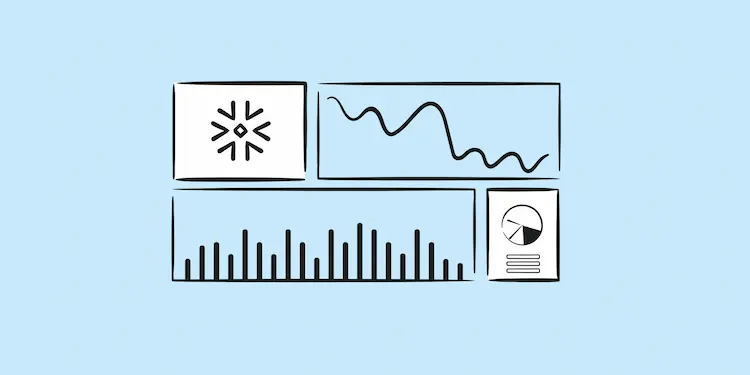In the ever-evolving landscape of cloud computing, Snowflake has emerged as a powerful and versatile data warehousing platform. Its scalability, ease of use, and performance capabilities have made it a top choice for businesses dealing with large volumes of data.
However, as with any cloud service, managing costs is crucial to ensure your organization’s budget remains in check. This article explores essential strategies for Snowflake cost monitoring and optimizing your cloud expenses without compromising on performance and functionality.

Understanding Snowflake Cost Components
Before diving into cost-saving techniques, it’s essential to understand the key cost components associated with Snowflake usage. Snowflake’s pricing model revolves around three main aspects:
Storage Costs
Snowflake stores your data in a structured manner using virtual warehouses. The amount of data you store directly impacts your storage costs. Understanding your data storage patterns, optimizing data compression, and periodically archiving or deleting unnecessary data are ways to mitigate storage expenses.
Compute Costs
Snowflake’s unique architecture separates storage and computing, allowing you to compute resources independently based on your query workload. The size and number of virtual warehouses you use influence compute costs. Right-sizing virtual warehouses and utilizing Snowflake’s auto-pause feature when warehouses are idle can significantly reduce computing expenditures.
Data Transfer Costs
Transferring data into and out of Snowflake can lead to additional costs, particularly if you’re dealing with large datasets. Being mindful of data transfer volumes and optimizing your data loading and unloading processes can contribute to cost savings in this area.
4 Ways to Optimizing Snowflake Costs

Data Compression and Clustering
Efficiently managing your data within Snowflake can lead to substantial cost savings. Utilize Snowflake’s automatic clustering feature to organize data physically, reducing the need for scanning unnecessary data during queries. Additionally, leverage data compression techniques to store more data in less space, ultimately decreasing storage costs.
Warehouse Scaling and Auto-Pause
When configuring virtual warehouses, consider the size and concurrency requirements of your workloads. Scaling up or down based on demand prevents overprovisioning and reduces unnecessary computing costs. It also enables the auto-pause feature to automatically suspend warehouses during periods of inactivity, minimizing compute expenses.
Query Performance Optimization
Poorly optimized queries can consume more resources and lead to higher costs. Ensure that your SQL queries are well-structured, and take advantage of Snowflake’s query profiling tools to identify bottlenecks and areas for improvement. Efficient queries not only enhance performance but also contribute to cost efficiency.
Data Retention Policies
Establish clear data retention policies to manage the lifecycle of your data. Regularly assess the necessity of retaining historical data and consider archiving or deleting data that is no longer relevant. This practice directly impacts storage costs and prevents unnecessary accumulation of data.
Continuous Improvement and Collaboration

Cost optimization in Snowflake is not a one-time endeavor but an ongoing process. Regularly review your usage patterns, assess the effectiveness of implemented strategies, and adapt to changing requirements. Collaboration between teams, such as data engineers, analysts, and finance personnel, aligns technical decisions with business goals and budget constraints.
Concluion on Snowflake Cost Monitoring Essentials
Snowflake’s robust data warehousing capabilities come with the responsibility of managing costs effectively. By understanding the key cost components, implementing Snowflake cost monitoring strategies, and optimizing resource utilization, businesses can balance achieving high-performance data processing and controlling cloud expenses.
As organizations continue to rely on cloud technologies, mastering the art of cost-saving in platforms like Snowflake becomes an essential skill for sustainable growth and innovation.